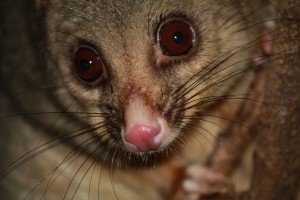Waikato University researcher Nicky Cameron has proven that new technology could be used to help pin down the origins of many preserved Maori heads. She has tested the enamel on the teeth of a model species, brushtail possums, to show that the technology could be used to compile a database for identifying the geographical origins of Maori remains — including those stored at Te Papa.
 Preserved heads — known as toi moko or upoko tuhi — and other human remains such as skeletons and bones, known as koiwi tangata, are kept at the Museum of New Zealand, which actively pursues repatriations from museums and other institutions in Europe and North America.
Preserved heads — known as toi moko or upoko tuhi — and other human remains such as skeletons and bones, known as koiwi tangata, are kept at the Museum of New Zealand, which actively pursues repatriations from museums and other institutions in Europe and North America.
The museum has had as many as 500 koiwi tangata and has recovered about 85 of the hundreds of preserved heads thought to have been kept in foreign museums. There have been 360 returns of remains from 13 countries and another 20 toi moko from French museums are expected to be handed back to Te Papa staff in Paris on Monday.
Some bones have been relatively easy to return to their iwi because they were labelled by colonial collectors who took them from caves and burial grounds. But most of the preserved heads were not identified, partly because many were captive slaves taken from other tribes, so the distinctive regional patterns in tattoos do not provide a reliable guide to origins. Ngapuhi and their allies in the Bay of Islands raided as far south as Hawke’s Bay.
“The means by which the regions from which the upoko tuhi originated, and to which they will be subsequently returned, is the subject of debate,” said Ms Cameron, a chemistry student who wrote her masters thesis on the research. She collected possum teeth from trappers and farmers around the country, because enamel on teeth is laid down in the first few years of life for most mammals, then stays mostly unchanged. Many pre-European Maori and Moriori lived all their lives in the one area and ate only local food — as possums do now — so she investigated to see if comparable minerals in the tooth enamel could be matched to geological records.
Her method of analysis, Laser ablation inductively coupled plasma mass spectrometry (LA-ICP-MS) has been widely used by forensic scientists for the direct surface analysis of solid samples, and is increasingly being used by archeologists, such as in tracking voyaging of the Lapita people thought to be the ancestors of modern-day Polynesians.
Tiny samples from the teeth can show variations in the enamel of trace minerals such as sodium, magnesium, phosphorus, calcium, manganese, zinc, strontium and barium. Because possums rarely move more than 5km from where they were born, the same patterns of trace elements in human remains could mean the person grew up in the same area.
“This methodology shows considerable potential for use in identifying geographical origins of human remains with in New Zealand alone or as an adjunct to other techniques,” Wrote the authors of a paper, based on her research, just published in the Journal of Pacific Archeology.
“However a greatly expanded database, both geographically and numerically is required to clarify points of overlap and to ensure that traditional regional groupings are adequately represented”. The initial analysis was simplified by excluding results from the Christchurch, Ohkuru and West Coast regions, where there were overlaps.
Samples listed as from Auckland actually fell on a boundary beteween Tai Tokerau and Tainui iwi groupings, and the former regional grouping would take in samples from Whangarei as well. There were also ovelaps between Taupo and Taumarunui, which fell into Arawa and Whanganui groupings, but researchers said these problems could be addressed by epanding the numbers of samples.
Ms Cameron’s supervisor, the university’s School of Maori and Pacific Development Professor Ngahuia Te Awekotuku — also listed as one of the authors of the research — has previously described it as “really important and exciting” because it could help return “items of a sensitive nature” from overseas museums to particular areas, and iwi. Professor Te Awekotuku said in her 2007 book, Mau Moko, that the colonial trade in human remains began when Captain Cook’s botanist, Joseph Banks, swapped some second-hand underpants for a Maori teenager’s head in the summer of 1770.
At one stage, during the Musket Wars, two tattooed heads bought one musket and many slaves were tattooed only to be killed so that their heads could be sold as that of a distinguished rangatira. Traded heads were typically cut off below the jawline, the brains and eyes removed and the eyelids sewn together, the lips cut off and the teeth exposed. They were dried in the sun and over fires. The trade continued until the 1830s.
Registered journalists can contact the SMC for details of the published paper.